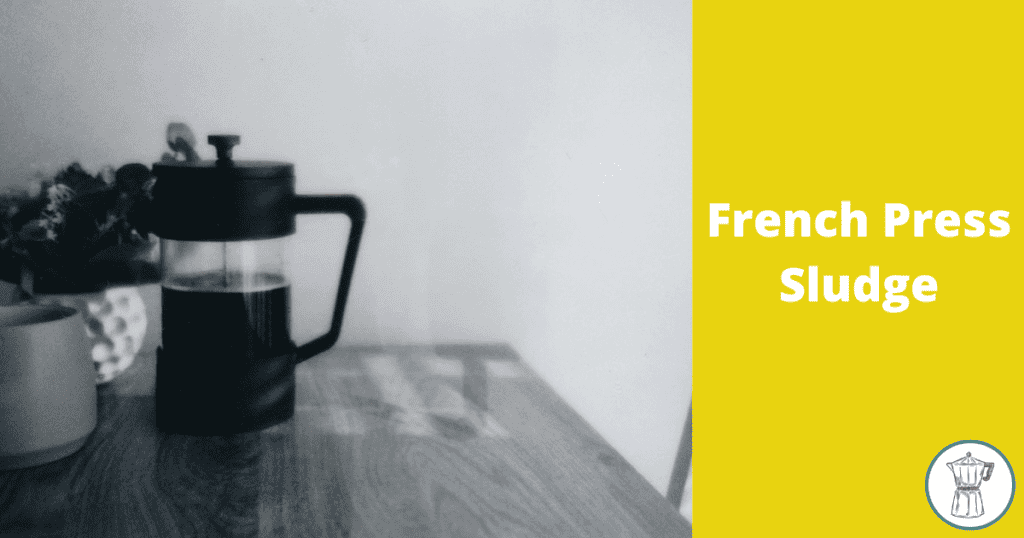Do you know how to brew coffee with less French press sludge?
The other day I used my French press to make coffee and get on with a busy day at work. But I realised that lots of sludge is left in the cylinder of the French press lately. Why is this happening? Stick around, in this article I’m going to go over a bunch of reasons sludge is left in a French press, and as a bonus I’m going to share a few brewing tips to help enjoy more delicious coffee.
Let’s dive straight into it.
Why does no one like sludge?
Let’s get real, who likes sludge in their coffee? It makes coffee taste just bad, it almost turn coffee into undrinkable.
It’s vital to know a bunch of ways to reduce sludge and simply enjoy better coffee every single time. This is what I’m going to talk about in the next section, I present 5 easy ways.
The choice is yours to pick the ones that are going to work for you best.
5 ways to dramatically reduce sludge
Let’s talk about 5 simple yet effective ways to dramatically get less and less sludge left in the cylinder of your French press and of course your mug.
1. Go for coarse coffee grounds
The simplest way of reducing sludge is to change the grinding size and to slightly course.
One of the best practices for brewing coffee with a French press is to use coarse coffee grinds rather than the ones you use for a Moka pot or an espresso machine.
By grinding coarse coffee grounds it means that not much of used coffee slips through your mug as it’s blocked by the filter of the French press.
If your grinder has 5 different levels and you use the 3rd for example to grind your coffee, try to use level 4 or even 5.
Keep in mind that coarser coffee means that your coffee is going to be slightly more oily but richer at the same time. It’s good to know that especially if you don’t really like too rich coffee.
2. Skim the surface with 2 spoons
This is a little known trick that you can implement in a minute and all you need is only 2 spoons.
Here’s the trick:
When coffee is still brewing in a French press coffee particles start floating and when it’s ready to press the plunger down, these particles escape through the filter and mix up with coffee ending up in your cup.
To stop those floating coffee particles escaping through your cup, all you need to do is use 2 spoons right before the brewing is done (after 2-3 minutes when brewing has started) and skim the surface to remove all these particles.
This is going to do wonders and this way you’re going to get rid of a huge part of coffee sludge, making coffee that’s going to taste much better.
3. Use a filter
A simple yet effective way of blocking coffee sludge slipping through your cup is to use a filter.
Are you done with brewing coffee?
Hold a filter above your mug and pour the coffee in the French press into your mug, most of the sludge will be blocked by the filter.
What should you use as a filter?
You can use different kinds of things as a filter such as:
- Coffee filter (white or brown)
- Napkin
- Kitchen roll
- Tie
- Handkerchief
- Dry cloth
All of them will do but my personal go-to filter is a coffee filter (and preferably a brown which means that it doesn’t contain bleach which can ruin the taste of your coffee), but it’s entirely up to you to use any of this list to stop coffee sludge.
4. Stick to grinding best practices
What does that even mean?
Believe it or not, this affects the amount of coffee sludge that ends up in your mug.
For example, if you use a pretty old grinder, the odds are it’s not going to grind your coffee beans too evenly and this translates into more coffee sludge.
Here are the most important best practices to keep in mind:
- Pick a burr grinder over one with a blade as it grinds more evenly
- Hold the grinder vertically while grinding
- Avoid shaking the grinder while grinding as the coffee beans aren’t going to be ground evenly
- Consider replacing the burrs when you notice that your grinder isn’t grinding that good any more.
- Try out coarse levels of grinding to find out which one makes better coffee and at the same time produces less sludge
5. Let the sludge sit on the bottom
It’s a good idea for many reasons to let your coffee sit for an extra minute in the cylinder.
First of all, it’s vital not to drink too hot coffee because you might burn your mouth, not good.
Plus, if you let the sediment settle it means that it will go on the bottom of the cylinder and it won’t end up in your cup.
You now have at least 2 good reasons to wait a minute before you pour coffee into your mug.
Let’s wrap it up
French press sludge is one of those things that absolutely puts you off from drinking coffee. Pick the way we discussed above that suits you best and you’ll be just fine in terms of reducing the sludge in your coffee.
FAQ
Let’s look at a couple of FAQs
How do you clean a dirty French Press?
It’s fairly simple to clean a French press. All you need to do is use a dry cloth to remove used coffee and rinse and repeat if need be.
Can you use vinegar to clean a French press?
Yes you can, which is actually a pretty good idea to remove coffee oils that might build up on the inside of the cylinder over time. Go for white vinegar as it won’t change the colour of your French press. To get rid of the smell of the vinegar, dip a dry cloth into hot water and wipe the surface of your French press – repeat the process if the smell is still there.
How often should your French press be cleaned?
Ideally you should clean it every time you use it. It’s boring to clean it right after you’re done with your brewing but if you look after your French press properly it means that your gadget is going to last longer and you won’t need to buy another French press any time soon.

- How to Remove Coffee Stains From Countertop The Easy Way - December 21, 2023
- Can You Reuse Coffee Grounds in French Press? Truth Inside - December 12, 2023
- Can Expired Coffee Creamer Make You Sick? 3 Ways to Find Out - December 9, 2023
